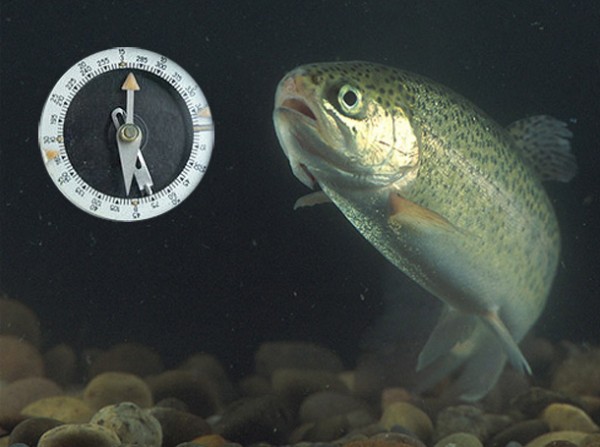For long, scientists have observed the movement of the fishes, when they navigate to far-off lands and then return straight back to their homes. While a lot of senses are involved in this way back home, one of the chief abilities of the fishes is to somehow discern Earth’s magnetic field and make use of it to learn the path back home.
This ability is specially remarkable in a rainbow trout which can spend 3 years at sea and go as far away from home as 300 kilometers and yet return back without any qualms. Now, researchers have been able to isolate ‘magnetic cells’ in rainbow trout that it uses to respond to Earth’s magnetic field.
According to an earth scientists at Ludwig Maximilians University Munich who is leading the study, Michael Winklhofer, “We think this will really be a game changer. To study magnetic sensory cells, you have to be able to get hold of them first, and that’s what we’ve finally developed a way to do.”
Earth’s magnetic field changes around the globe and this is a key way for the birds and animals to navigate away from their home and back. The closest scientists could come to understanding this phenomenon was to somehow discern that magnetite was a key element involved in this. This elements is found embedded in the tissues of of birds and fishes.
Winklhofer and his team was able to isolate these magnetic cells by playing a sample of ranbow trout cells over a magnet and under a microscope. In each of the tissues contained in the sample, one and four cells rotated as the magnet placed under them rotated. Naturally, these cells were the ‘magnetic cells’ which somehow corresponded to a magnetic field.
What was astonishing for the scientists was that the magnetism in each of these cells was tens to hundreds times greater than they had expected. This essentially means that not only can fishes navigate back accurately, they can also find any minute differences in their exact latitude and longitude.
According to an ecologist in the University of Auckland, “This result is really a step beyond anything we’ve done before. The idea that they came up with here is just great and it worked like a charm. What I think needs to be done now is that we need to demonstrate that these cells are actually sensory cells.”
Courtesy: Science
[ttjad]




